Either ‘Thrikai venna’ for Krishna temples or Ponkala for Devi temples, banana is deeply linked with Kerala culture. It’s given as prize for local sports during festival seasons or offered to temples or elephants as offerings. No doubt, plantain and banana play a significant role in the daily life of Keralites. Plantain is called ‘Vaazha’ and banana fruit is called ‘Vaazha pazham’ or simply ‘pazham’ in Malayalam. Read about different types of banana available in Kerala.
To serve Kerala meal or to wrap a meal for lunch, plantain leaf is most essential. What about offering poojas at temples of Kerala? How prasadam is served to devotees? In plantain leaves, Isn’t it? Both raw and well-ripened banana can be used to prepare wide variety of Kerala dishes – from banana chips to Pazhampori and from Erisseri to Avial. Like coconut, fondly known as ‘Kalpa Vriksha’, all parts of plantain are edible and used for many purposes. Through this column, let me describe in brief how banana is linked to Keralites’ life and culture.
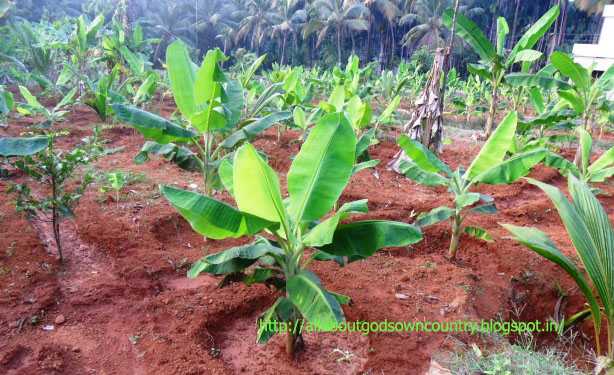
Young banana plants planted
Banana flowers (Vaazha Koomb) and inner stem (vaazha pindi) of plantain are very healthy and can be used to prepare dishes like thoran and chutney. Honey inside flowers of plantain is very tasty and kids like it a lot. Seedless banana is a very tasty fruit and can be used as the best combo of jaggery added payasams of Kerala sadya. It can’t be avoided particularly in sadya of southern parts of Kerala. It can also be used as side dish for upma or steamcake. Palayamkodan also known as palayamthodam, a small type of yellow banana is the best natural medicine for constipation. You need to take 3 or 4 bananas after your supper at night.
Banana leaf for serving meals
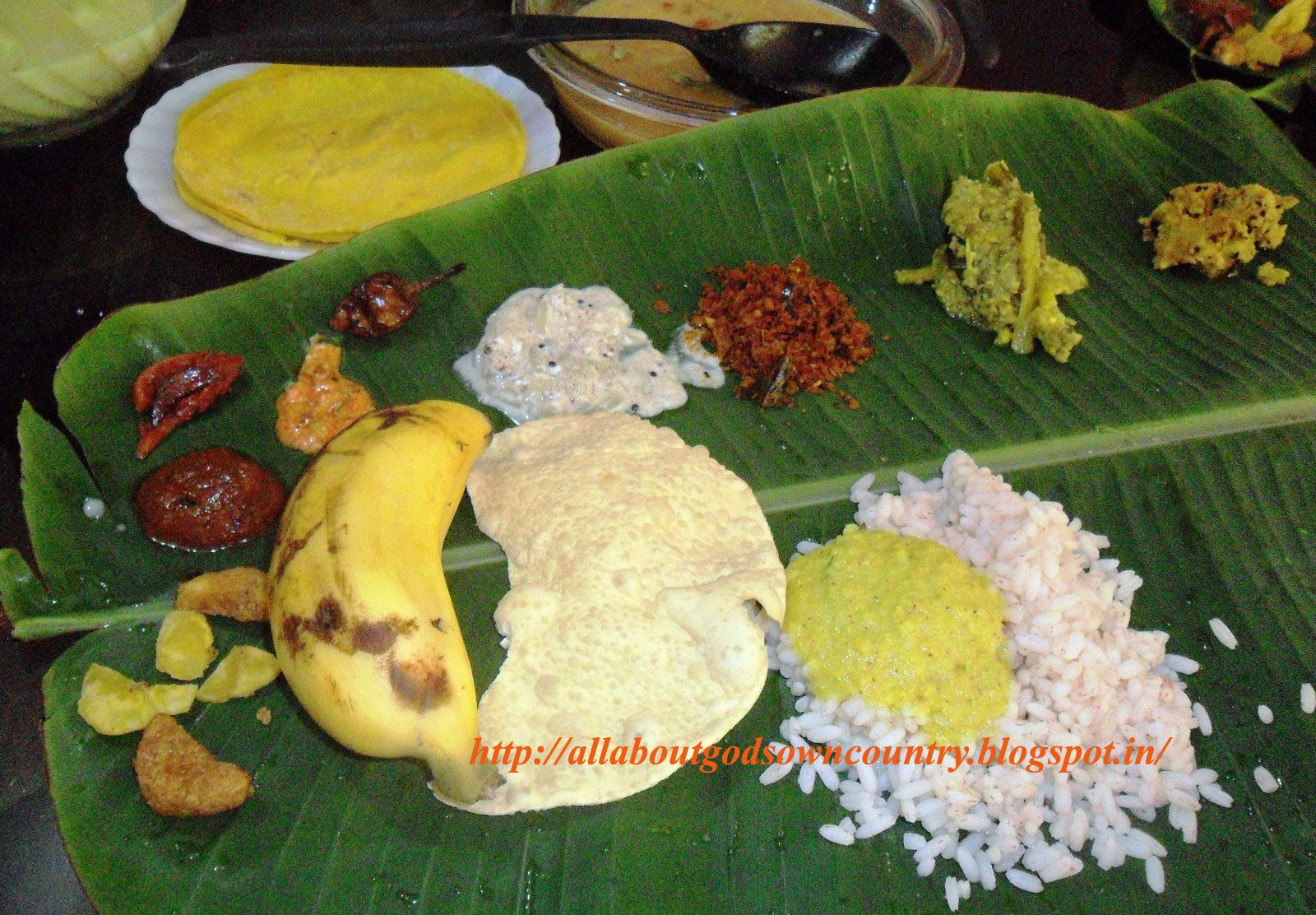
Traditional Kerala meal served on banana leaf
Kerala vegetarian meal, known as Kerala sadya is prepared during Onam, Vishu, birthdays, marriages and similar auspicious occasions. All items are served in plantain leaf. Upperi and chips made from raw banana are served first on the plantain leaf. Each and every object placed on the leaf follows an order and rule. That’s the reason why I told, banana has become a part of Kerala culture and tradition. Also, snacks like ada and chakkayada are prepared in banana leaf. Banana leaf is used for Ayurvedic treatment of several diseases and is also used to perform Hindu rituals, soon after death.
Banana served as side dish for payasams
Banana is an integral part of Kerala sadya. It’s placed along with banana chips on the left side of the leaf in Thiruvananthapuram sadya. Banana payasam is also served in many grand feasts.
Plantain plant and leaf for decorations
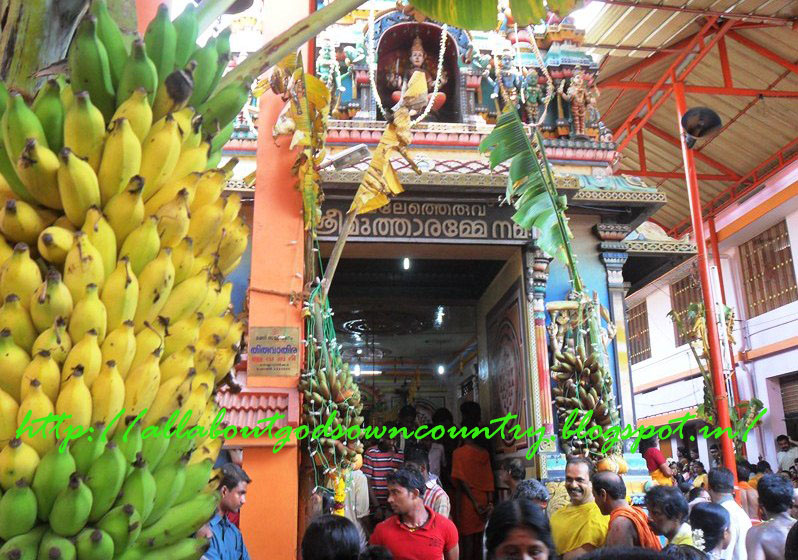
Banana bunches used for decorations in temples
May it be wedding functions or house warming celebrations, plantain plants are used for decorations. Leaves are also used for decorations, poojas and other serving purposes. Prasad (prasadam) is given to devotees in Kerala temples in banana leaves.
Nenthrapazham (Ethapazham) for snacks
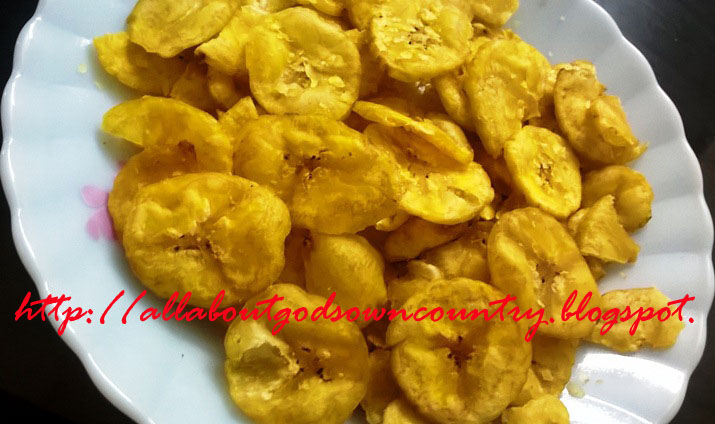
Banana chips – Common snack of Kerala
Sharkkara Upperi and Banana Chips together form an integral part of Kerala sadya, and both together are served as first item on banana leaf. Both these snacks are prepared from Ethapazham – a type of long banana. Keralites’ traditional snacks – Pazham Pori, Unnakai and Banana Roast are also prepared from Ethapazham.
Banana fruit form a part of temple rituals
Banana fruit is used for dishes, eating fresh and in temples for doing rituals. ‘Kadali’ banana is most commonly used for Hindu rituals as it is believed to be god’s favourite. Banana can be used for Hindu rituals like thulabharam (when anything equivalent to the weight of the person is given as offering to temple), thrikaivenna (butter plus kadali banana given as offering to Lord Krishna) and is included as bunch while giving offering to Vishu (Vishu kani) and Navarathri/Mahanavami (while offering books and weapons for pooja).
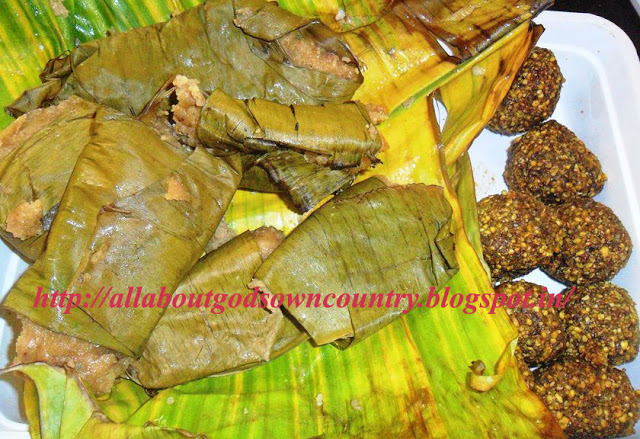
Ilayappam – A sweet dish prepared during Attukal Ponkala
Thiraliyappam made during Attukal Ponkala is very auspicious. Appam is made using rice or wheat adding jaggery and coconut and wrapped in banana leaves before it is steam cooked. Aside Ponkala Payasam, Thiraliyappam is also a major offering at this occasion.
Banana stem serves as medicine
Banana stem known as ‘Vaazha pindi’ or ‘pindi’ in Malayalam is taken after peeling of external layers. It’s used for preparing thoran, kichadi and chutney and is very nutritious too. It is an effective remedy to clean the digestive track. Vaazha pindi is abundant source of fibers.
Banana stem and other parts including banana bunch is used for decorative purposes of Hindu rituals and for temple celebrations. Several rituals in Kerala temples like ‘Erakk Pooja’ of Bhadrakali Mudippura temples use banana stem and leaves for decoration as well as rituals. Leaves are used for serving ‘prasadam’ to devotees too.
The outer brown cover of banana stem is used as thread to make garlands for worships and other purposes; it’s strong enough to tie anything. The stem is peeled off, dried and used for preparing kitchen accessories, bags, bangles, costumes, ear rings and many decorative items for showcase.
Different varieties of banana
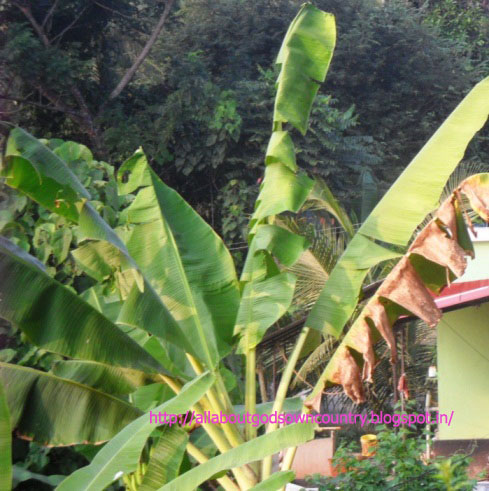
Banana Plant
In India, maximum variety of banana is cultivated in Kerala. For me, it’s not at all easy to mention its English words. So, I am using Malayalam words to mention a few varieties. Kadali, Chenkadali (kappa), Jnali poovan (Rasakadali), Ethan, Karinkadali, Thenkadali, Padathi, Palayamkodam, Monthan, Kannan, Koombilla Kannan, Karpoora Valli, Poovan, Chempoovan, Malampoovan, Mysore Poovan, Chaarakannan, Nedunendran, Robusta (morees), Eranadan, Chethi and Viroopakshi are the different tastes and varieties of bananas cultivated in Kerala. They entirely differ from one another in taste. They differ in size and colour skin too.
Let me quote something from my experience. A few years back, I met a UP family who came to Kerala to take some medical treatment. They said, it’s for the first time they have seen a lot of type of banana varieties and their delicious flavours differ from one another too. As per their opinion, dosa along with chutney and sambar and different types of bananas are the best dishes of Kerala.
Go through the gallery to read a few more unique articles on agriculture traditions, farming methods and customs of Keralites. Here is the page link. Click on the images to read.


















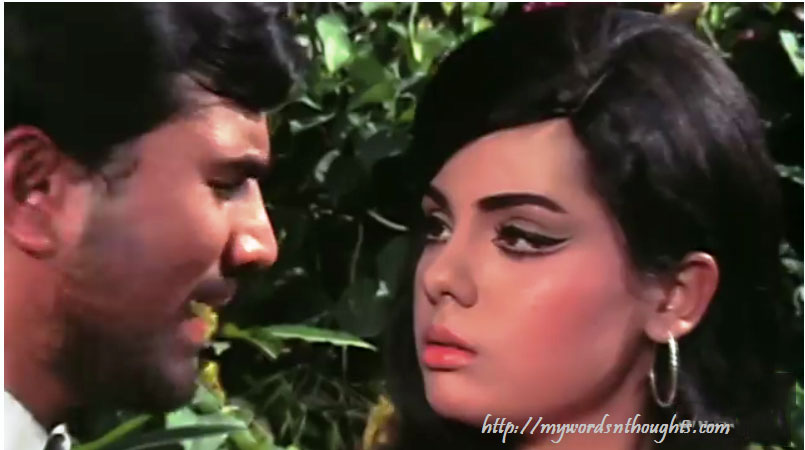

i planted rasakadali and yethan today …..
Nice to hear…Actually we Keralities have left farming